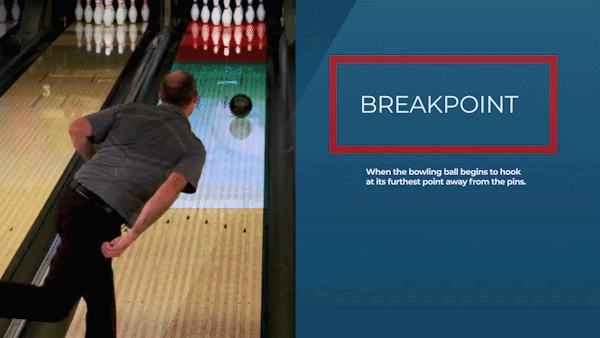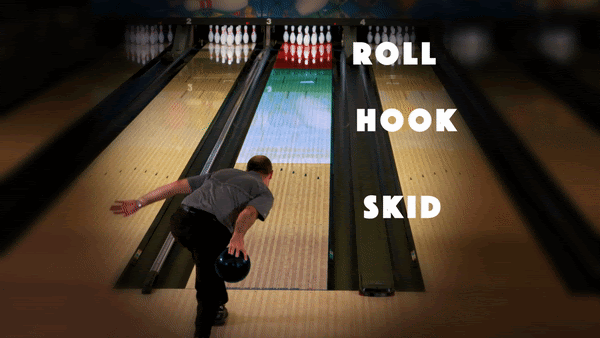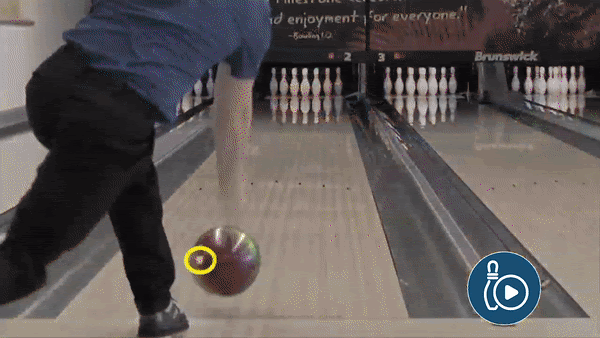Every time a bowling ball touches the lane, it alters the oil pattern.
No two lanes with the same oil pattern play exactly the same.
Topography, lane surface, amount of bowling balls already thrown, throwing styles, and line choice are all contributing factors that explain why the lane is doing what it is doing.
That said, it’s important to watch your bowling ball’s motion to determine if you are matched up with what you are competing on.
Benchmark ball
Your benchmark ball is your gauge for understanding how the lane is playing.
A benchmark ball is in the middle of the road—not too aggressive and not too weak.

Start by throwing this ball during practice to help get lined up.
The benchmark ball is your homebase, and you should know quickly if it is going to be the ball you are going to start your competition with. It’s possible it will be the wrong ball altogether.
The key is to control the distance down to the breakpoint and see how it reacts off of the breakpoint.

Ball motion
Skid, hook, and roll make up the three phases of ball motion.
In order to match up your bowling ball, bowling ball speed, axis tilt, axis rotation and lane surface, your bowling ball needs to achieve all three phases on the lane.

If your ball grabs early, you know the volume of oil is lower. If it skids late, you know you are competing on a higher volume of oil.
This helps determine which bowling ball in your bag you need to use in order to be successful.
Watch the bowling ball front-to-back instead of side-to-side.
Bowlers often get confused and believe the bowling ball is hooking too much, when instead it is hooking too early or too late.
Post your shot
You cannot watch your bowling ball’s motion if you do not post your shot. Holding your finish position until the bowling ball falls off the deck is known as posting your shot.

While you are holding this position, watch the bowling ball’s motion front-to-back instead of side-to-side.
Again, bowlers often think their bowling ball is hooking too much, but really it is hooking too early or too late.
The motion in the backend when the ball hits the breakpoint is called hook power.
One of three things will happen:
- It will hook too hard.
- It will hydroplane past the pocket and miss the headpin.
- It will get into a good roll and hit the pocket without deflection.
Consistency of the shape is key, so that if you do have an errant release or get a little off-tempo with your feet and ball speed, you will limit the fallout at the pins.
If the bowling ball hooks early and has a strong backend reaction, this indicates that you need to change the shape of the shot.
Move your feet, target left, and open up the launch angles—this will allow the ball to get into the oil and cause it to skid farther and hook later.
Check out our lane play library for more expert instruction that will improve your average.
What are different hand position and what reaction those hand positions will cause the ball to do on the lane?also when to use these different hand position?
What is the best ball for bowling teams
Very good suggestions
Good info